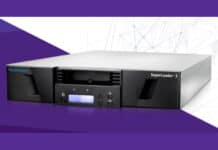Kalyan Deep Ray, Manager – Global Partners Organisation, India & SAARC, CommScope shares about the company’s channel strategies for 2020
What have been the key highlights of 2019 and how do you see 2020 to be shaping up as an important year for the IT channel industry?
In 2019, we expanded our customer base and the addressable markets with the acquisition of ARRIS to further stabilise, strengthen and solidify our market position. We believe this acquisition unlocks high growth opportunities in adjacent markets, and our optimism and expectations are steadfast for future success. The year was also finished on a high note, as we generated fourth quarter net sales of US$ 2.3 billion – an increase of 117.3 per cent during the same period in the previous year. Despite an overall industry slowdown, our strong operational discipline helped us drive significant cash flow, resulting in US$ 300 million of early debt pay-down by the end of 2019 and an additional US$ 100 million pay-down early this year.
2020 will be the kick-off to a more connected future, even as companies grapple with the impact of the COVID-19 pandemic. Operators in 2020 will include busy rolling outs, densifying and powering network connectivity in a variety of bands while working on driving standards and technology, as the demand for seamless, always-on access to the internet is expected to skyrocket, especially in current situation to cater to remote working. Already, we are seeing digital giants Netflix and Facebook reduce image and video quality in India to lessen the burden on bandwidth. In 2020, for Indian companies to stay competitive amidst the world’s greatest remote working experiment, connectivity will become as critical as water or power.
The coronavirus outbreak will also accelerate the tipping point for key network, customer premise equipment, and smart home solutions which have been gaining popularity throughout India in previous years. The confluence of technologies such as 6GHz spectrum and Wi-Fi 6 will give rise to a range of new services. Whether looking at 10Gbps access across uplink and downstream speeds, more pervasive and powerful home networks, or intelligent visual assistants—the need for improved remote user experiences will empower Internet service providers to roll out new levels of service capabilities.
Can you point out the top three technology trends which the channel community should be betting on and why?
The major three technology trends which the channel community should be betting on are:
Fibre networks are more critical than ever
From network operators to data centre operators, it is critical to have fibre infrastructure and backbone networks setup to cope with the spike in data flows stemming from increased use of real-time video calls, large file sharing and accommodating multiple collaborators over virtual workspaces in the foreseeable future. While there has been investment in robust, scalable infrastructure, much more can be done to enable high-speed broadband across the country, for instance, to support newer technologies. For instance, to deploy more Fibre-To-The-Home (FTTH) services, or tapping on Network Convergence will allow fibre networks to deliver a wider range of services and technologies.
Accelerating 5G and IoT developments to support remote living
Never have we seen a true need for connectivity as we do now, with millions of workers and students using virtual tools to log onto enterprise or education platforms globally. These remote experiences will all be underpinned by connected devices, with numbers likely to meet or exceed Garnter’s predictions of 20 billion connected “things” by this year. Ultimately, the accelerated growth of the Internet of Things (IoT) will require greater bandwidth capacity.
5G networks, which are designed to support a diverse set of IoT use cases by implementing a configurable, virtualised core that will be radio-technology agnostic, should be able to deliver 1,000 times more bandwidth than current 4G networks in any given area, and we anticipate that 2020 will become a major year for 5G coverage and capacity building giving impetus to market demand for more connected experiences.
Wi-Fi 6 to ramp across multiple verticals
2019 saw the introduction of Wi-Fi 6-certified products, the deployment of shared spectrum, availability of 5G handsets and service in selected cities, and an uptick in interest for private networks. These new standards, products and services give enterprises more choices in meeting increased demands for both capacity and coverage, as well as evolving end-user expectations.
We will also see shipments of Wi-Fi 6 access points (APs) increase across multiple and diverse verticals such as healthcare and education to support high-bandwidth applications, including eSports, AR/VR, and public safety.
In fact, Wi-Fi 6 APs which support up to a four-fold capacity increase over preceding Wi-Fi 5 Wave 2 APs are expected to represent the majority of access points shipping by the end of 2020. Multiple Wi-Fi 6 APs deployed in dense device environments can collectively deliver required quality-of-service to more remote clients with more diverse usage profiles.
Please list out the top channel directions which your company has set for its partners and where should the partners invest to be aligned with these directions?
In 2020, we have executed our brand strategy roadmap with the consolidation of ARRIS and Ruckus into the CommScope brand, to further enhance our end-to-end portfolio of networking equipment. This has also given us access to extensive resources and talent, that can help us push the boundaries of technology with our refreshed PartnerPRO program, enabling us to continually drive indirect demand with and through the partners, to meet the ever-evolving technology needs of our end customers.
We will be focusing on reducing the overall cost of building wireless networks, so new services can be implemented, and growth continues. We plan to reduce everything from installation costs to operational expenses, from leasing costs to transport costs. For example, our metro cell poles can reduce site acquisition and installation time and cost, and our DOCSIS nodes can be upgraded for distributed access architectures rather than being replaced. The new RUCKUS Wi-Fi 6 APs can support faster and more focused wireless coverage for a wider, newer range of remote use cases.
For the past 40 years, we have built networks for faster download speeds and better coverage. Everything in the 2020s will be about efficiency- meaning helping operators move more bits at lower cost.














